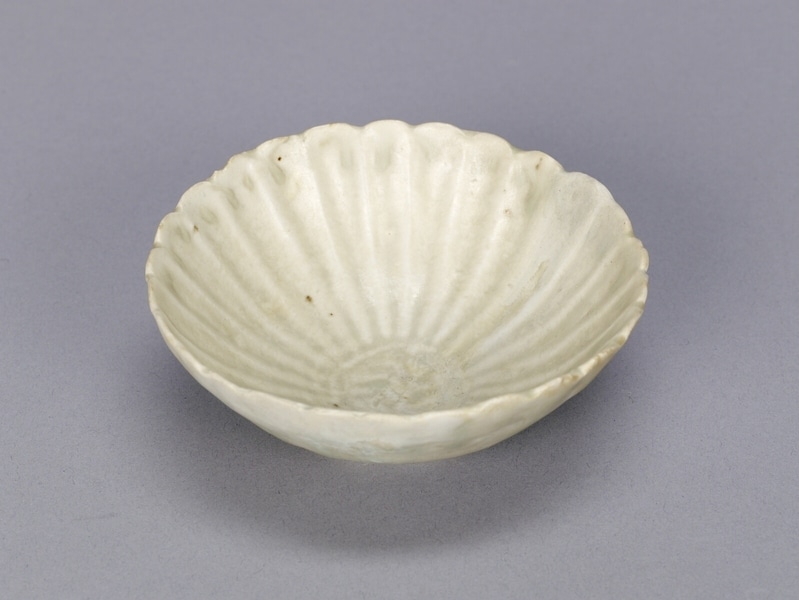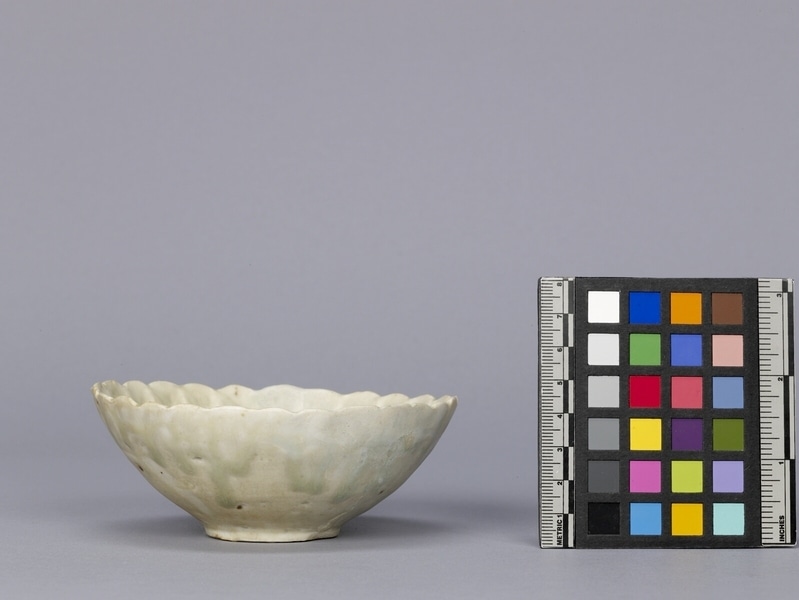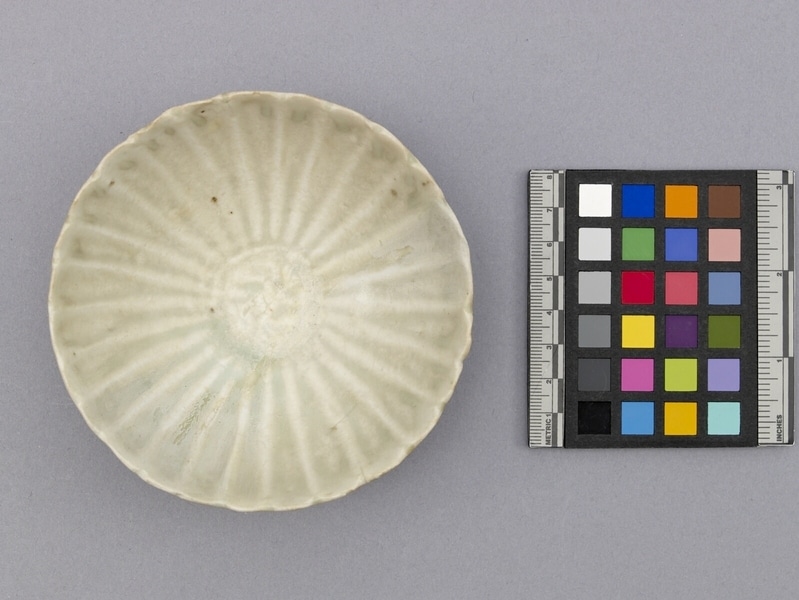Bowl Item Number: Edz1365 from the MOA: University of British Columbia



Description
A ceramic bowl. Narrowly fluted, curving into shallow circular unglazed foot and base. Thin white porcelain body covered in very pale light grey-green glaze with a bluish cast, which pools in pale green drops just below the outer edge of the rim. Glaze slightly glossy in places, very matte in others. Interior has glaze pools in shallow circular groove at bottom, which encloses some irregular pooling which may obscure a decorative motif. Paper tag on exterior near base reads "17 ljs .5."
History Of Use
It is probable that the first true porcelain originated from kilns in Kiangsi (Jiangxi), since they were already producing an extremely refined porcelain by the beginning of the 11th century. The glaze on much of this had a blue to green tone caused both by traces of iron oxide in the clear glaze, and to firing conditions in the kiln. The output was intended for local markets in South China, although some found its way to the Philippines, Southeast Asia, Indonesia, and further west.
Narrative
Kiln sites producing ch'ing-pai also found in Fukien, Kwangtung, Anhui and Kwangsi Provinces. Another popular term for this glaze is ying-ch'ing. The pooling of the glaze at the rim may be caused by allowing the glaze to run toward the rim after dipping, a technique which began to appear in the 14th century.
Item History
- Made in Jiangxi, China between 960 and 1279
- Owned by Jean Fahrni before April 17, 1980
- Received from Jean Fahrni (Seller) and Fyfe-Smith Memorial Oriental Collection Fund (Funding source) on April 17, 1980
What
Who
- Culture
- Chinese
- Previous Owner
- Jean Fahrni
- Received from
- Jean Fahrni (Seller) and Fyfe-Smith Memorial Oriental Collection Fund (Funding source)
Where
- Holding Institution
- MOA: University of British Columbia
- Made in
- Jiangxi, China
When
- Creation Date
- between 960 and 1279
- Ownership Date
- before April 17, 1980
- Acquisition Date
- on April 17, 1980
Other
- Item Classes
- ceramics
- Condition
- good
- Accession Number
- 0622/0002